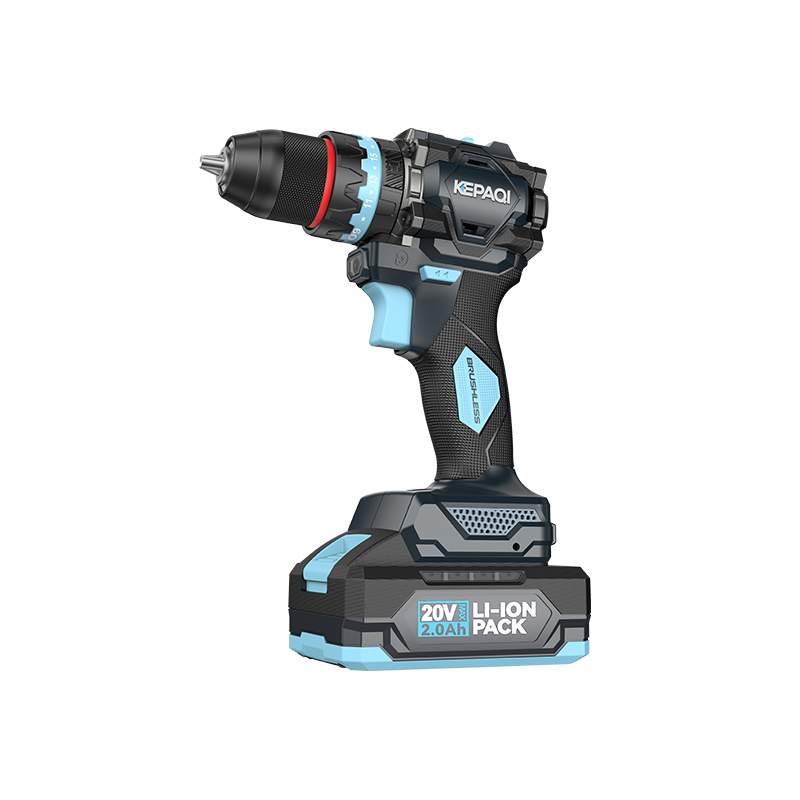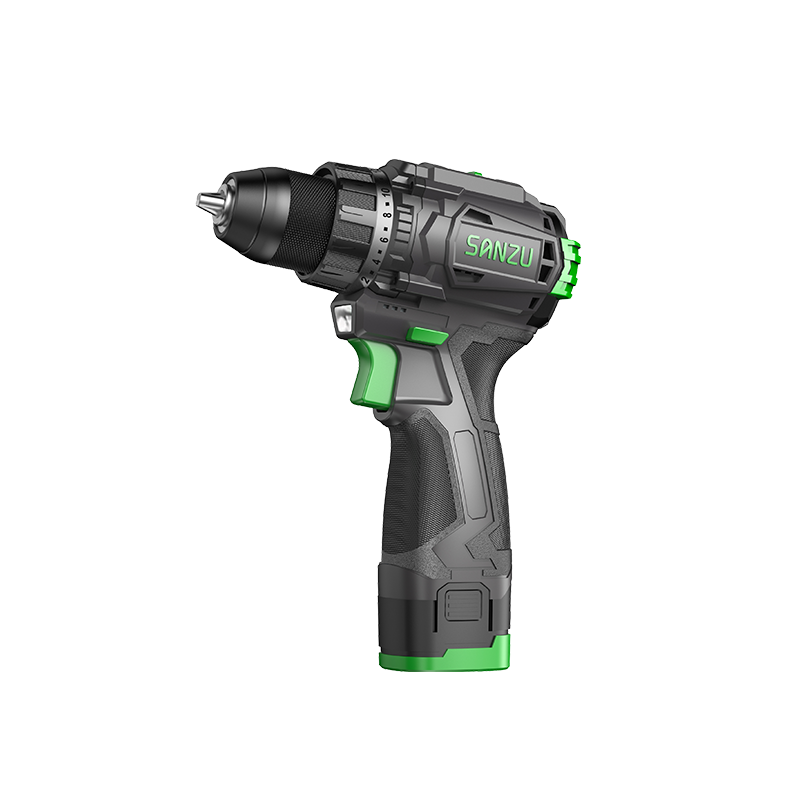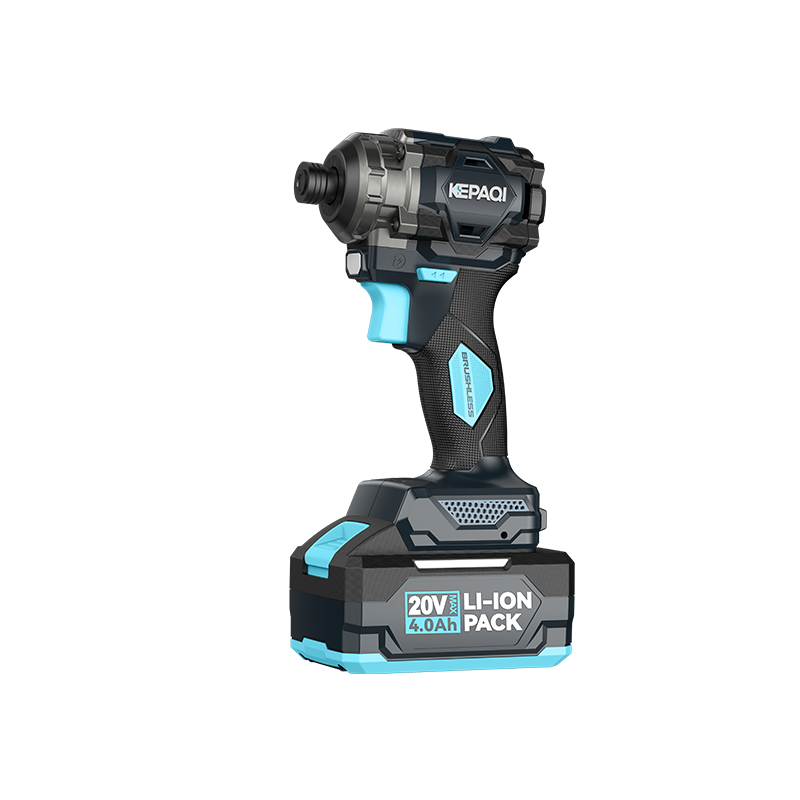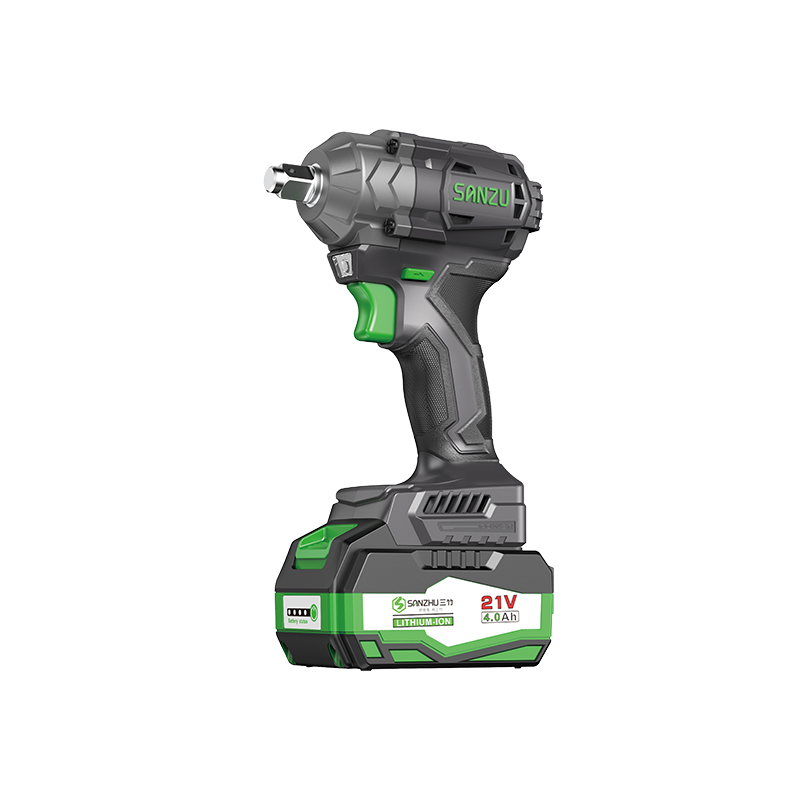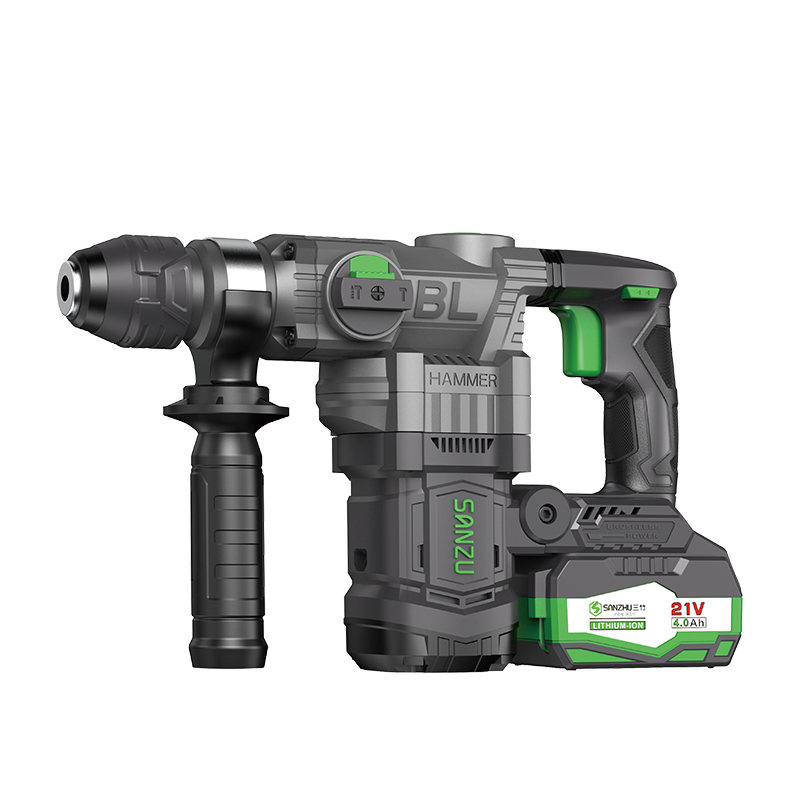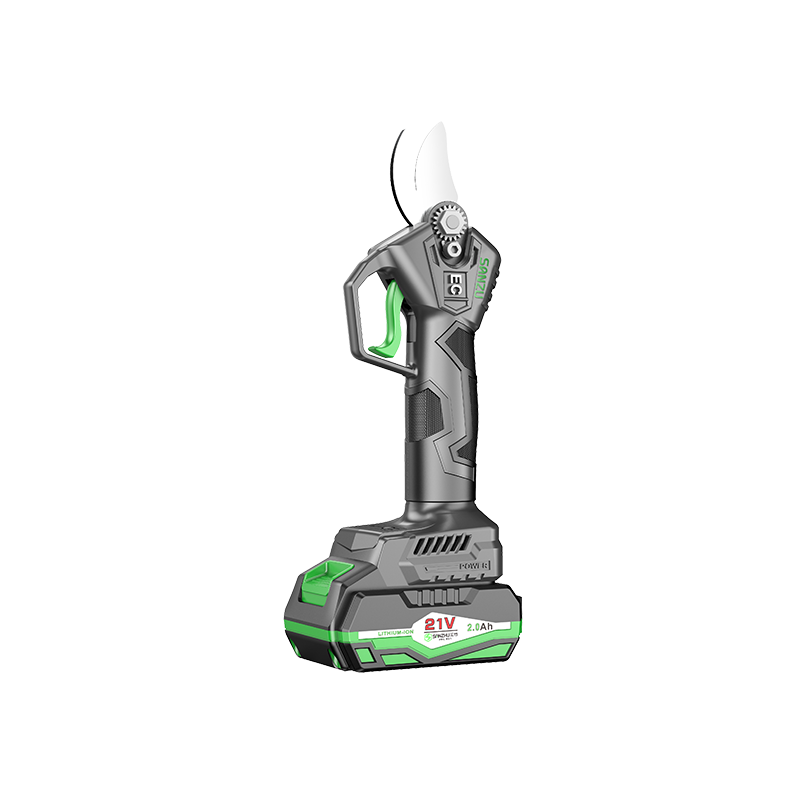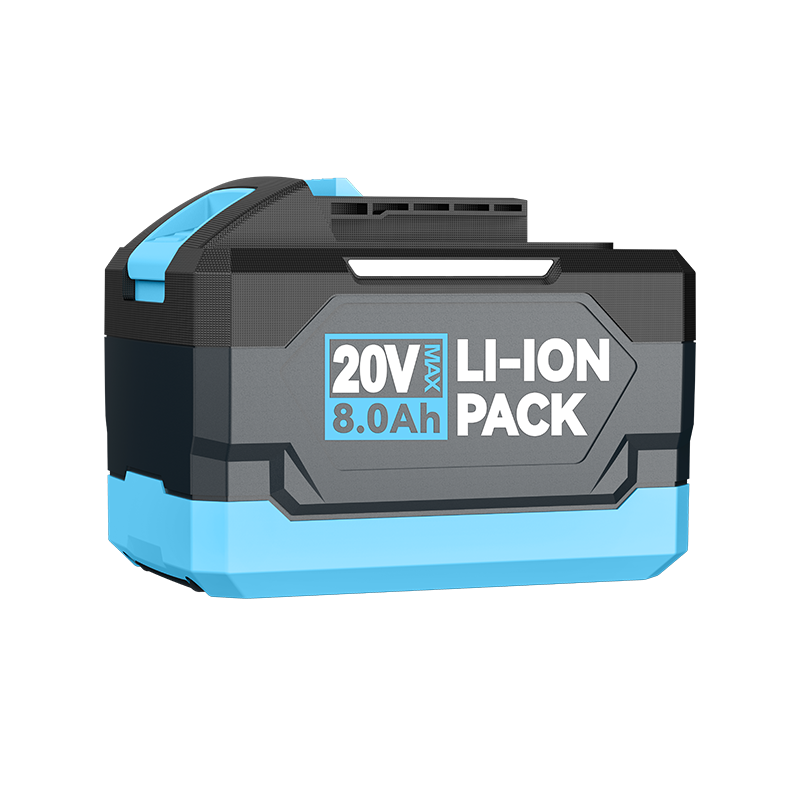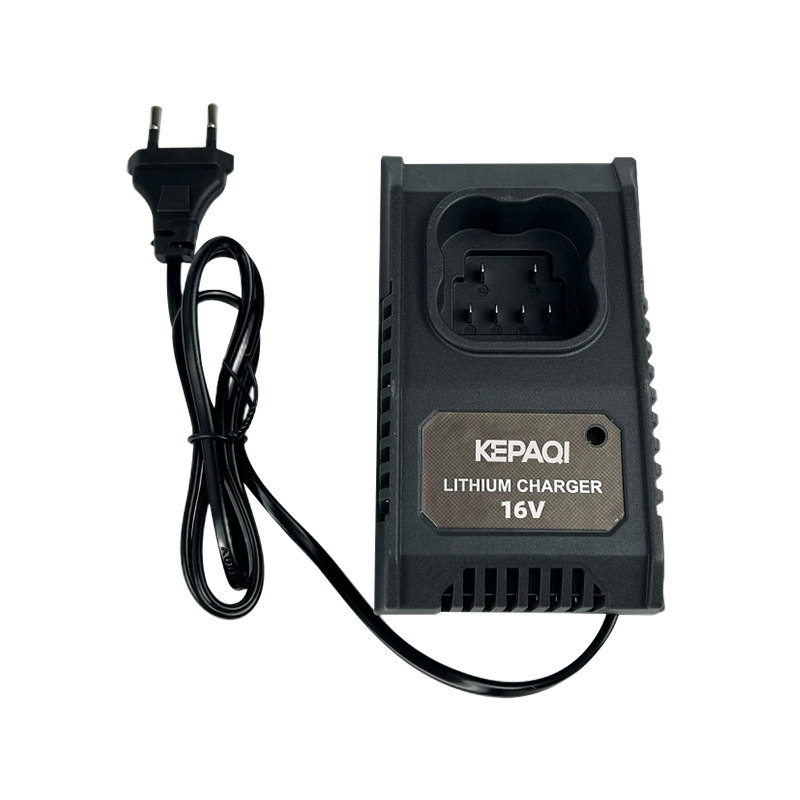Impact ratchets and impact wrenches are powerful tools that make fastening and loosening bolts and nuts quick and easy, but they are designed for different jobs. While they both use a hammering action to generate torque, their differences in size, power, and mechanism make each tool better suited for specific applications. This article will compare and contrast these two tools, helping you understand their unique features and choose the right one for your needs, whether you're a professional mechanic or a DIY enthusiast.
What is an Impact Ratchet?
An impact ratchet is a power tool that looks and functions like a traditional ratchet, but it uses a rotary hammering mechanism to deliver strong, concussive blows to the fastener. This hammering action allows it to generate significantly more torque than a standard ratchet or drill. Because of its smaller size and lower torque output compared to an impact wrench, it is specifically designed for working in tight or confined spaces where a larger tool wouldn't fit.
Key Features and Characteristics:
- Size and Form Factor: Slim, lightweight, and shaped like a traditional ratchet, making it easy to maneuver in tight spaces like engine bays.
- Torque: Typically has a lower torque output, ranging from 30 to 100 foot-pounds, which is sufficient for smaller bolts and fasteners.
- Mechanism: Uses an internal hammer and anvil mechanism that delivers quick, low-impact blows to the bolt head.
- Speed: Operates at lower Revolutions Per Minute (RPM) than an impact wrench.
- Anvil Size: Common anvil sizes are 1/4" and 3/8", designed for smaller sockets.
Common Applications and Use Cases:
- Automotive engine repair
- Working under dashboards
- Assembling furniture or machinery in tight spots
- Removing or installing small bolts and nuts in confined areas
Pros and Cons:
- Pros: Excellent for tight spaces, lightweight, and reduces user fatigue.
- Cons: Lower torque output, not suitable for heavy-duty tasks, and may be slower for larger bolts.
What is an Impact Wrench?
An impact wrench, also known as an impact gun, is a powerful socket wrench power tool designed for delivering extremely high torque. It uses an internal mechanism that stores energy from a motor and then delivers it in powerful, sudden bursts to the output shaft. This makes it ideal for loosening or tightening large, stubborn fasteners that would be difficult or impossible to handle with a standard wrench.
Key Features and Characteristics:
- Size and Form Factor: Larger and heavier than an impact ratchet, typically with a pistol grip.
- Torque: Delivers significantly higher torque, often ranging from 150 to over 1,000 foot-pounds, with some industrial models exceeding that range. This high torque is essential for heavy-duty applications.
- Mechanism: The internal hammer mechanism is more robust and delivers stronger, more forceful blows to generate maximum torque.
- Speed: Generally operates at a higher RPM compared to an impact ratchet.
- Anvil Size: Common anvil sizes are 1/2", 3/4", and 1", designed for larger and more heavy-duty sockets.
Common Applications and Use Cases:
- Automotive repair (e.g., removing lug nuts, suspension work)
- Heavy equipment maintenance and repair
- Construction, such as structural bolting and large assembly projects
- Disassembling machinery with large, rusted fasteners
Pros and Cons:
- Pros: Extremely high torque output, fast and efficient for heavy-duty tasks, and can easily handle rusted or over-tightened fasteners.
- Cons: Too powerful for many smaller tasks, can over-tighten or damage threads if not used carefully, and its size makes it unsuitable for confined spaces.
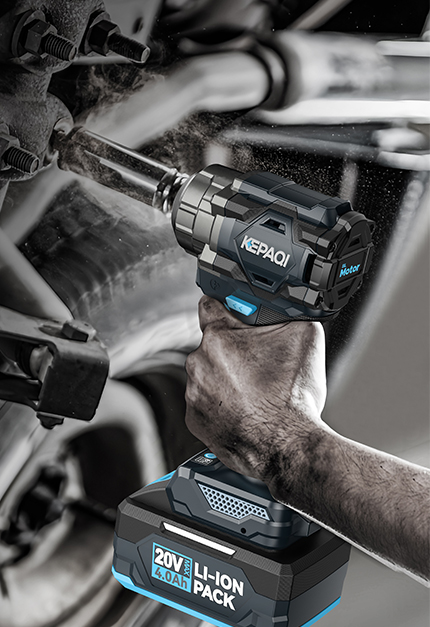
Key Differences Between Impact Ratchets and Impact Wrenches
While both tools use a percussive hammering action, their core design and purpose lead to significant differences. Understanding these distinctions is crucial for selecting the right tool for a given job.
Size and Maneuverability
- Impact Ratchet: Designed for a slim profile and lightweight feel. Its elongated, low-profile head allows it to easily fit into tight, cramped spaces like engine bays, under dashboards, or between components where a bulkier tool wouldn't have enough clearance.
- Impact Wrench: Is a larger, more robust tool with a pistol-grip body. Its size and weight are a trade-off for the immense power it generates, making it less suitable for intricate work or confined areas.
Torque and Power
- Impact Ratchet: Operates with a lower torque range, typically between 30-100 foot-pounds. The impact action is more about assisting the user in overcoming minor resistance and speeding up the process, rather than breaking free heavy-duty fasteners.
- Impact Wrench: The primary purpose of an impact wrench is to deliver extreme torque. Models can range from 150 to over 1,000 foot-pounds, making them capable of breaking free rusted bolts, tightening lug nuts to spec, and handling other high-torque applications.
| Feature |
Impact Ratchet |
Impact Wrench |
| Typical Torque |
30-100 ft-lbs |
150-1,000+ ft-lbs |
| Ideal Use Case |
Tight spaces, light to medium-duty tasks |
Heavy-duty, high-torque tasks |
| Common Anvil Size |
1/4" and 3/8" |
1/2", 3/4", and 1" |
| Maneuverability |
High |
Low |
Application
- Impact Ratchet: Is the tool of choice for jobs requiring precision and access to limited spaces. It excels at tasks like engine assembly and disassembly, removing components with numerous small bolts, or working on vehicle interiors.
- Impact Wrench: Is built for power and speed on larger, more demanding jobs. It is indispensable for tire changes, suspension work, large equipment assembly, and any task where high torque is a necessity.
Mechanism
- Impact Ratchet: The internal mechanism is geared towards delivering fast, lighter impacts. The design prioritizes speed and repeated blows to quickly turn a fastener with minimal resistance.
- Impact Wrench: The mechanism is designed to store and release a large amount of kinetic energy in a single, powerful hammer blow. This "break-away" torque is what allows it to loosen extremely tight or rusted bolts.
Scenarios: When to Use Each Tool
Choosing between an impact ratchet and an impact wrench often comes down to the specific task at hand. The ideal tool is determined by the required torque, the size of the fastener, and the accessibility of the work area.
Impact Ratchet:
The impact ratchet is the go-to tool for precision work in confined or hard-to-reach spaces. Its low-profile head and extended body make it perfect for jobs where a bulkier tool would be a hindrance.
- Engine Repair: Ideal for removing and installing bolts on manifolds, water pumps, alternators, and other engine components where space is limited. Its low torque output prevents stripping threads on smaller, more delicate fasteners.
- Dash and Interior Work: Excellent for working under the dashboard, on interior panels, or in other cramped vehicle spaces to access and tighten bolts.
- Small Assembly: Useful for assembling machinery or equipment with numerous small bolts that require more power than a hand ratchet but less than a full-sized impact wrench.
Impact Wrench:
The impact wrench is the powerhouse tool for heavy-duty applications that require maximum torque to break free stubborn fasteners.
- Lug Nut Removal: This is one of the most common applications for an impact wrench. Its high torque can quickly loosen and tighten lug nuts on cars, trucks, and heavy machinery, making tire changes and rotations fast and efficient.
- Suspension and Chassis Work: Perfect for breaking loose rusted bolts on suspension components, control arms, and exhaust systems.
- Heavy Equipment Maintenance: An essential tool for working on farm equipment, construction vehicles, and other large machinery where bolts are large and require a significant amount of force to manipulate.
- Structural Bolting: Used in construction to fasten large bolts on steel beams and other structural elements.
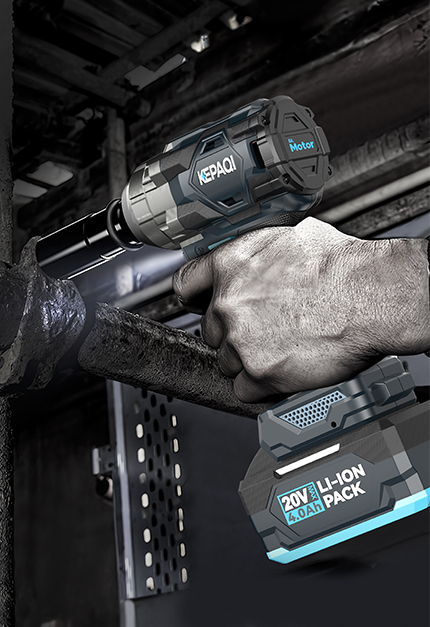
Factors to Consider When Choosing
Selecting the right tool depends on your specific needs, the type of work you do, and your budget. Here are the key factors to evaluate before making a purchase.
Torque Requirements
First, determine the torque necessary for your most common tasks.
- For light-duty tasks like engine repair, small appliance assembly, or working in confined areas, a tool with a lower torque range (30-100 ft-lbs) is sufficient. An impact ratchet is often the best choice here as it provides enough power without the risk of over-tightening or damaging delicate components.
- For heavy-duty tasks like removing rusted bolts, changing lug nuts on a car, or working on heavy machinery, you need a high-torque tool. An impact wrench with a torque output of several hundred foot-pounds is essential. Using a lower-torque tool for these jobs can damage the tool itself and will not get the job done.
Air vs. Electric
Both impact wrenches and ratchets come in various power sources, each with its own pros and cons.
| Power Source |
Pros |
Cons |
| Pneumatic (Air) |
Higher Power for heavy-duty jobs; Lighter weight for its power class; More Durable due to fewer moving parts. |
Requires a separate air compressor and hose, limiting portability; Noisy; Requires regular maintenance (e.g., oiling). |
| Electric (Corded) |
Consistent Power as long as it's plugged in; Unlimited Runtime; Generally More Affordable. |
Limited by cord length; Less mobile; Can be a tripping hazard. |
| Cordless (Battery) |
Highly Portable and versatile; No hose or cord to manage; Modern models offer significant torque. |
Battery life is limited; Can be heavier due to the battery; Battery power decreases as charge drops. |
Budget
The price of these tools varies widely based on power source, features, and overall quality. Generally, a simple corded or pneumatic tool will have a lower upfront cost than a high-end cordless model with a battery and charger included.
- Entry-level tools are suitable for DIYers with occasional, light-duty needs.
- Mid-range tools offer a good balance of power, durability, and features for frequent users and serious hobbyists.
- Professional-grade tools are a significant investment but are built to withstand daily, heavy use in a professional setting.
FAQ
This section addresses some of the most common questions about impact wrenches and related tools to help clarify their uses and maintenance.
1. What is a cordless impact wrench?
A cordless impact wrench is a powerful, battery-operated tool that uses a rotational and hammering action to deliver high torque. Unlike pneumatic (air-powered) wrenches that need an air compressor, or corded electric ones that need an outlet, a cordless impact wrench runs on a rechargeable battery, offering exceptional portability and freedom of movement. This makes them highly popular for mobile mechanics, roadside assistance, and DIY projects away from a power source.
2. What is the difference between a cordless impact wrench and a cordless electric drill?
While both tools use an electric motor and can drive fasteners, their mechanisms and primary purposes are distinct.
- A cordless drill uses continuous rotational force to drill holes and drive smaller screws. It has a clutch that allows for torque adjustment to prevent over-tightening. It's best for precision work, drilling, and light-duty fastening.
- A cordless impact wrench uses a powerful internal hammer and anvil mechanism to deliver strong, concussive blows, which generate much higher torque. It's designed for heavy-duty tasks like loosening rusted bolts and tightening large fasteners, where a drill would not have enough power.
3. What key parameters should be paid attention to when purchasing a cordless impact wrench?
When buying a cordless impact wrench, focus on these key specifications:
- Torque (ft-lbs): This is the most crucial factor. Choose a torque range that matches your typical tasks, from medium-duty (200-400 ft-lbs) for general automotive work to heavy-duty (1,000+ ft-lbs) for large equipment.
- Battery Voltage and Capacity: Higher voltage (e.g., 20V) generally means more power. Look for a higher Amp-hour (Ah) rating for a longer runtime on a single charge.
- Impacts Per Minute (IPM): This measures how many times the hammer mechanism strikes the anvil per minute. A higher IPM rating means the tool will work faster and be more effective at breaking loose stubborn fasteners.
- Anvil Size: Common sizes are 1/2" for general use, 3/4" and 1" for industrial applications. Make sure the anvil size is compatible with the sockets you plan to use.
4. Who is suitable for using a cordless impact wrench?
A cordless impact wrench is an excellent tool for a wide range of users, from professional mechanics to DIY enthusiasts. It is particularly suitable for:
- Professional Mechanics: Its power and portability make it ideal for quick, efficient work in a workshop or for mobile repair services.
- Automotive DIYers: Perfect for home garages to handle tasks like tire rotations, brake jobs, and suspension work without the need for an air compressor.
- Construction and Assembly Workers: Useful for a variety of tasks where mobility is key, such as framing, deck building, or assembling large structures on-site.
5. What are the safety tips for using a cordless impact wrench?
- Wear Personal Protective Equipment (PPE): Always use safety glasses to protect your eyes from debris and wear work gloves to improve grip and protect your hands.
- Use Impact-Rated Sockets: Do not use standard sockets with an impact wrench. The force can cause them to shatter, creating a serious hazard. Always use sockets specifically designed for impact tools.
- Maintain a Firm Grip: Hold the tool with both hands when possible to maintain control, especially for high-torque applications.
- Inspect the Tool: Before each use, check the tool and battery for any signs of damage or wear.
6. Can I use a normal screwdriver or electric drill bit for an impact wrench?
No, you should not use normal screwdriver bits or standard electric drill bits with an impact wrench. These bits are not designed to withstand the high torque and repeated concussive impacts and can break or shatter, which is extremely dangerous. Always use impact-rated bits that are specifically designed with a stronger, more durable shank to handle the intense force of an impact tool.
7. How to maintain my cordless impact wrench?
Proper maintenance will extend the life of your tool:
- Clean After Use: Wipe the tool down to remove dirt, grease, and debris. Use a brush or compressed air to clean vents and hard-to-reach areas.
- Store Properly: Store the tool and battery in a cool, dry place away from moisture and extreme temperatures.
- Inspect Regularly: Check for any loose fasteners or signs of wear on the anvil and other components.
- Battery Care: Store batteries at a partial charge (around 50%) if they will not be used for an extended period. Avoid fully discharging the battery and always use the correct charger.


